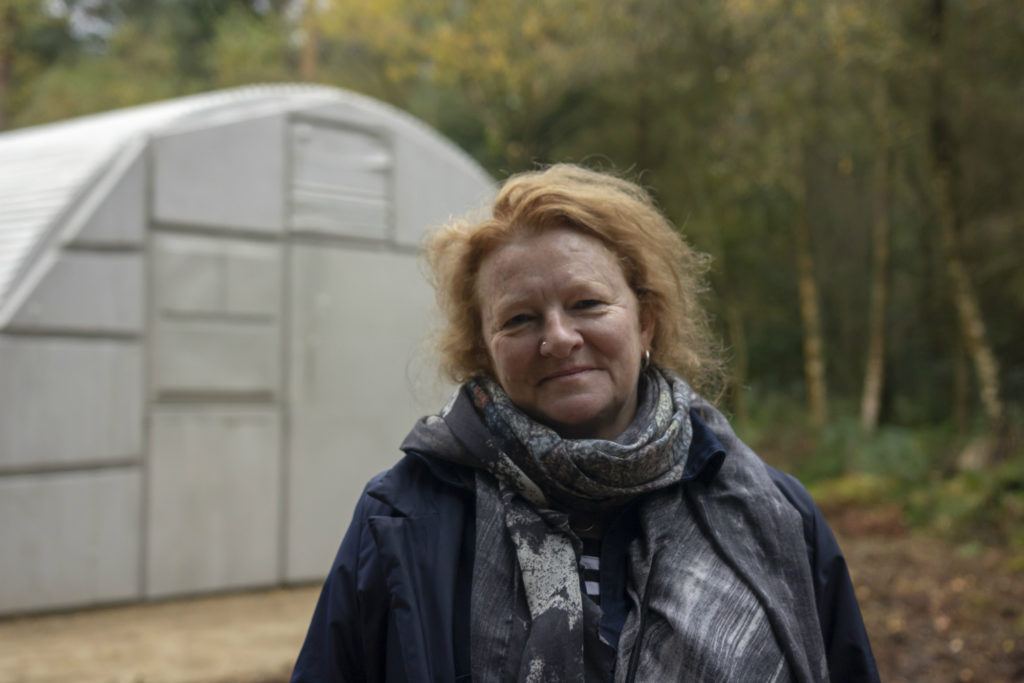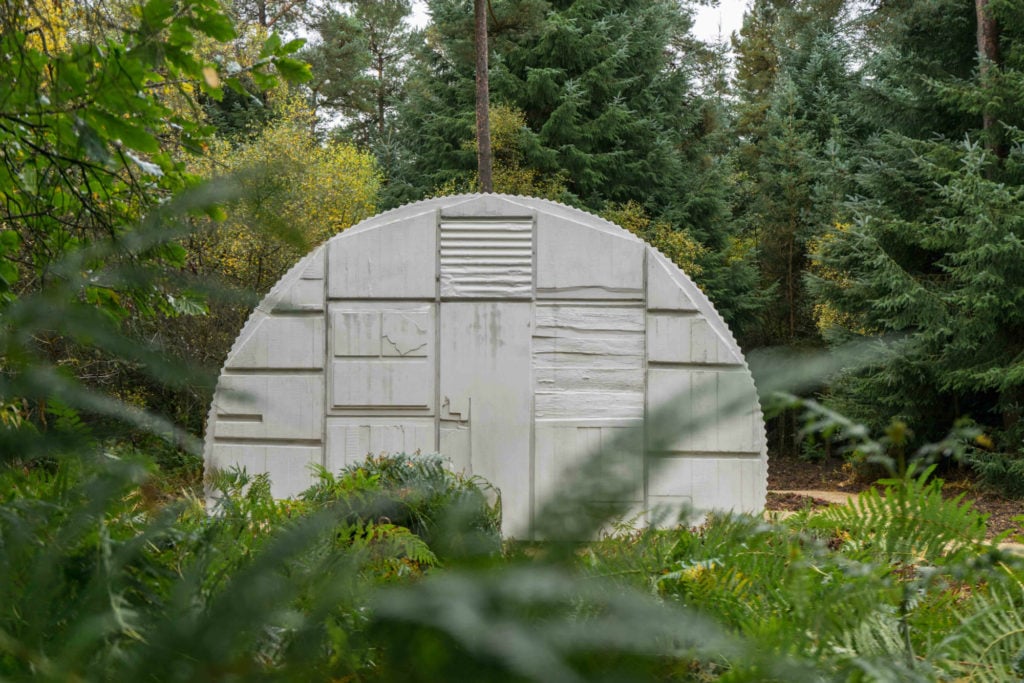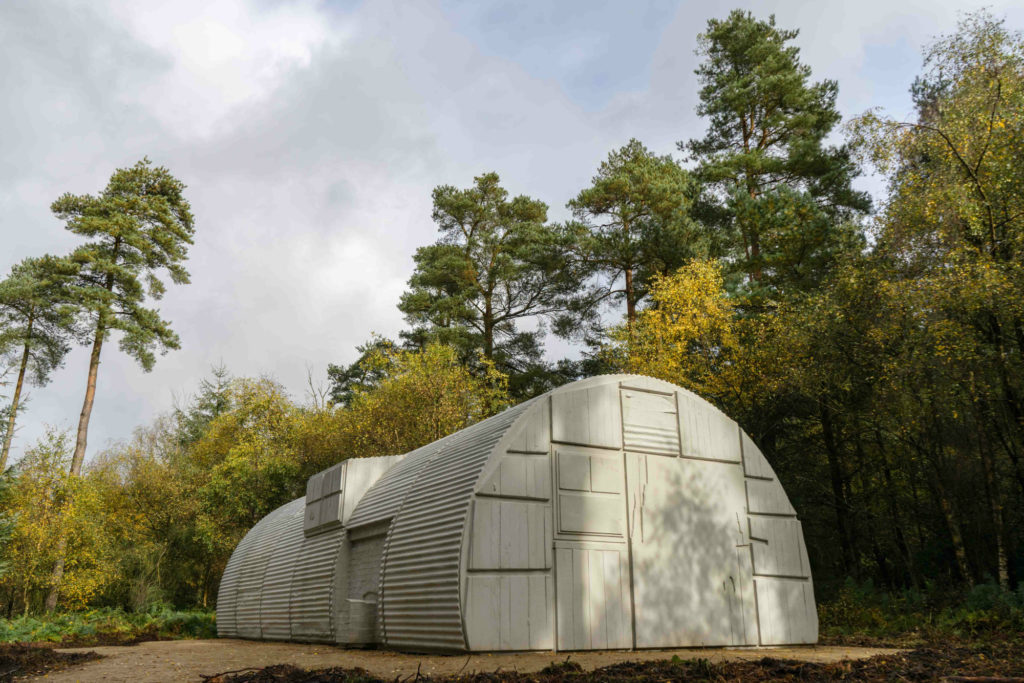Art World
How Sculptor Rachel Whiteread Transformed a World War I Military Shelter Into Her Latest Public Artwork
The Turner Prize-winning artist has cast a Nissen hut as a memorial to the war that divided her grandfathers.

The Turner Prize-winning artist has cast a Nissen hut as a memorial to the war that divided her grandfathers.

Javier Pes

During World War I, hundreds of thousands of easily-erected huts were made to provide shelter for both the troops and hospitals. Now, a surviving example of the innovative structures has been turned into a remarkable war memorial by the leading British sculptor Rachel Whiteread. This week, the artist unveiled Nissen Hut deep in the heart of a forest in the North of England.
The Turner Prize-winning artist’s latest “Shy Sculpture,” as she calls the ongoing series, is a product of the 14–18 Now commission, and it may be her most personal public work so far. That’s because her grandfathers both had very different experiences of the war. One fought in the British army; the other was a conscientious objector. Both actions required moral courage.
“On my father’s side they were Socialists and Quakers,” she tells artnet News. “My other grandfather fought out in Egypt against the Turks. Growing up I was very aware of the war,” she says. “Both the first and second World War were in our lifeblood,” she adds.
The artist has created the “ghost” of a Nissen Hut by casting in concrete a painstaking copy of the simple corrugated steel and wood structure devised in the war. It could be shipped flat packed to the front and erected there in a few hours. She did not want to destroy the example that stands in the Dalby Forest in North Yorkshire because it is still in use. “Dog walkers shelter in it when it is raining,” she says.

Rachel Whiteread, Nissen Hut (2018). Photo by Ben Thomas, Forestry Commission.
Whiteread’s major survey opened last month at the National Gallery of Art in Washington, DC, having traveled from Tate Britain in London via Vienna’s Belvedere. Indeed, the artist’s versions of the humble structures have become destinations on both sides of the Atlantic.
On Governors Island, her hut overlooks New York Harbor, while in the high desert of California an LA-based collector has commissioned two of the haunting structures. Whiteread has created Boathouse on the banks of a Norwegian fjord and a “lost” Jewish library in Vienna, but until her 14–18 NOW commission, she has not created a major, permanent sculpture in the UK.
She calls the Nissen huts extraordinary structures because they could be put up very quickly with a small workforce, originally using just corrugated steel and wood. Four men could erect one in a few hours. Around 100,000 were made for the British and US armies in the Great War. She likes the fact that a structure invented for the military is now used for all sorts of functions. “They are church halls, village halls, people live in them. They are very adaptable structures,” she says. “I try to cast their souls.”
For her research, Whiteread traveled to Northern France and Belgium, visiting the site of the Battles of Ypres. “I had never been. It is an extraordinary place,” she says. “I did a lot of traveling when I did the Holocaust Memorial in Vienna, including the Atlantic Wall, but I had never been to Ypres.” There she saw one of the first huts to be erected.
The 14–18 Now commission, which is a collaboration with the Forestry Commission, took longer than the year the British Army engineer and inventor Major Peter Norman Nissen spent developing a prototype. It was ultimately deployed during the Battle of the Somme in 1916.
When some locals objected to the planned site for Whiteread’s hut, a second, more remote location was needed. The sculptor took the hitch in her stride. “It is much further into the forest,” she says. “I think it will be much more of a journey,” to discover the sculpture. “It won’t be long until it looks like it has always been there,” she says. Most 14–18 Now commissions have been performance-based on temporary interventions. Whiteread’s will, she hopes, outlast her and her children.

Rachel Whiteread, Nissen Hut (2018). Photo by Ben Thomas, Forestry Commission.
Nissen Hut and Whiteread’s other “Shy Sculptures” grew out of her own childhood. “My father was a geographer initially, so there were a lot of family holidays in the landscape.” Her late mother, the artist Patricia Whiteread, was a landscape painter originally. “They showed me how to look and understanding things,” she says. “When we were driving around the countryside my mum would always go ‘Stop!’ And she would get out and take photographs. That is something I do with my family.”
“Rachel Whiteread,” September 16 through January 13, 2019, at the National Gallery of Art in Washington, DC.